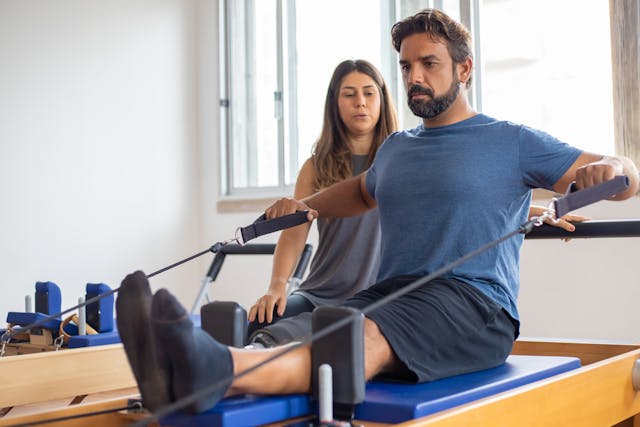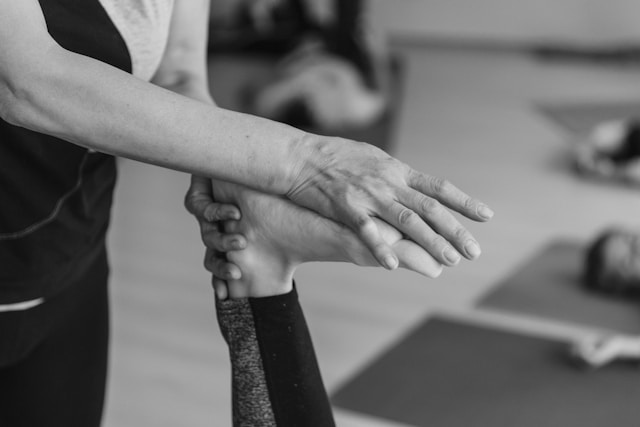Embarking on the journey of in-home physical therapy can be comforting and convenient, but it may also feel a bit daunting if you’re unsure what to expect. Your first session is a crucial step towards recovery and improved mobility, and understanding what will happen can help ease any anxieties you may have. This guide will walk you through the typical process, from the initial evaluation to the tailored exercises and treatment plans designed to meet your specific needs. Let’s explore how in-home physical therapy can become a seamless and integral part of your rehabilitation journey.
Initial Evaluation and Assessment
The first part of your in-home physical therapy session involves a comprehensive initial evaluation and assessment. Your physical therapist will arrive with all the necessary equipment and will take some time to review your medical history, discuss your current symptoms, and understand your goals for therapy. This conversation is crucial as it provides the therapist with a holistic view of your health status and expectations.
Following the discussion, the therapist will conduct a series of physical assessments to gauge your current abilities and limitations. These may include tests of your range of motion, strength, balance, and functional capacity. The results of these assessments help the therapist create a tailored treatment plan that addresses your unique needs and sets realistic, achievable goals for your recovery journey. Whether you need post-surgical PT or rehabilitation after an injury, the initial evaluation is a critical step toward your recovery. It not only helps the therapist understand your physical capabilities, but it also allows them to establish a baseline for tracking your progress over time.
Creating a Tailored Treatment Plan
Based on the initial evaluation, your therapist will design a customized treatment plan tailored to your specific needs. This plan will outline the types of exercises, therapies, and interventions that will be most effective for your recovery. The therapist will explain this plan in detail, ensuring you understand each component and feel comfortable with the proposed approach.
Communication is a key element in this process. Your therapist will encourage you to ask questions and discuss any concerns you may have. This collaborative approach ensures that you are fully engaged and informed, fostering a partnership that is crucial for the success of your rehabilitation.
Understanding the Role of Exercises
Exercises form a significant part of your physical therapy regimen. During the first session, your therapist will introduce you to a series of exercises tailored to improve your mobility, strengthen muscles, and address any specific issues highlighted during the initial assessment. These exercises are designed to be manageable and build gradually as your strength and mobility improve.
It’s important to understand that consistency is key when it comes to physical therapy exercises. Your therapist will guide you through each exercise, demonstrating proper form and technique to prevent injury and ensure maximum benefit. They will also provide you with a schedule to follow between sessions, emphasizing the importance of regular practice in your overall recovery.
Demonstration and Hands-On Techniques
Your physical therapist may use various hands-on techniques to assist with your recovery. These could include manual therapy such as massage, joint mobilization, or stretching techniques designed to alleviate pain and improve function. During the first session, your therapist will demonstrate these techniques and explain their purpose in your treatment plan.
This hands-on approach not only helps to address specific physical issues but also provides immediate feedback on your progress. As you experience relief and improved mobility, your confidence in the therapy process will grow, motivating you to stay committed to your rehabilitation journey.
Setting Realistic Goals and Expectations
Setting realistic goals and expectations is a vital component of your in-home physical therapy. Your therapist will work with you to establish short-term and long-term goals that are specific, measurable, achievable, relevant, and time-bound (SMART). These goals may range from reducing pain levels to improving daily functional activities such as walking or dressing independently.
Understanding the timeline and expected milestones helps to maintain motivation and provides a clear roadmap for your recovery. Your therapist will regularly review and adjust your goals based on your progress, celebrating your achievements along the way and addressing any challenges that arise.
Importance of Communication and Feedback
Open communication and feedback are essential for the success of your in-home physical therapy sessions. Your therapist will encourage you to share your thoughts, experiences, and any difficulties you encounter during the exercises or treatments. This ongoing dialogue ensures that any issues are promptly addressed and that the treatment plan can be adjusted as needed.
Building a strong therapeutic relationship based on trust and open communication is crucial for your recovery. Your active participation, combined with the therapist’s expertise, creates a powerful partnership that maximizes the effectiveness of your therapy and accelerates your journey toward better health and mobility.

Your first in-home physical therapy session will involve an initial evaluation, personalized treatment plan, exercises, hands-on techniques, and goal setting. It’s important to remember that every individual’s experience may vary depending on their unique circumstances. However, by understanding the general process and actively participating in your therapy journey, you can expect to see improvements in your physical abilities and overall well-being over time.







